#AI In Design
Explore tagged Tumblr posts
Text
Too many writers are using generative 'AI' to make their book covers, so I've written a guide on how to make your own cover for free or cheap without turning to a machine.
If you can't afford to pay an artist, you CAN make your own!
I hope this is a helpful overview that covers the basics and points to some free resources.
[Edit:] this is getting well outside this account's usual reach and a few people in the notes are making not so great comments about the fact I write weird erotica. So, for full disclosure: yes, I am an erotica writer. And the book covers include those for tentacle erotica and robot erotic romance. But you cannot see anything NSFW. All of these covers were approved by Amazon. Frankly, the cover of the most NSFW story, Oviposition, is downright tame! And to those complaining about the word 'Oviposition', that is a scientific word for a naturally occurring phenomenon - it's only naughty if you know the content of the story, which is only alluded to as 'sexy'.
I also do not believe that shirtless men require a warning, but yeah, two of the covers have shirtless men. The cover with a tasteful nude drawing (showing a bum, but not a weenor) has already been censored.
I can't do anything about the version of this post that got rb'd by a popular person, but for those who are concerned, consider this your content warning.
24K notes
·
View notes
Text
How Can AI Transform UX Design? Discover 8 Effective Strategies! - InCreativeWeb
Explore 8 powerful ways AI is revolutionizing UX design, making digital experiences smarter, faster, and more human-centered. From predictive behavior to adaptive interfaces, discover how artificial intelligence is driving personalization, accessibility, and seamless interactions.
#Interactive Web Design Tips#User Interface Design#AI In Design#AI UX#AI UX Design#Design With AI#user experience#UX design#UX Strategy
0 notes
Text
AI-Augmented Creativity: The Rise of Human-AI Co-Creation in the Digital Age

In today’s rapidly evolving digital landscape, AI-Augmented Creativity is no longer a futuristic concept—it is a transformative force reshaping how humans create, collaborate, and innovate. With the rise of artificial intelligence (AI) as a co-creator in fields such as writing, coding, music, and design, a new generation of professionals is emerging—individuals who see AI not as a replacement, but as a partner in the creative process.
At WideDev Solution, we explore this revolutionary trend and how it impacts the present and future of creative industries.
What is AI-Augmented Creativity?
AI-Augmented Creativity refers to the collaborative process where humans and AI systems work together to generate new ideas, content, or solutions. Unlike traditional automation where machines execute predefined tasks, AI in this context assists with generative and interpretative thinking, becoming a creative collaborator.
Popular platforms like ChatGPT, Midjourney, DALL·E, Runway ML, and Suno AI are enabling users to generate content—text, code, visuals, and music—at a quality and speed previously unimaginable.
The Rise of Co-Creation: Humans + AI = Innovation
The shift toward co-creation with AI is more than just a technological trend—it’s a paradigm shift in how we define creativity and collaboration.
1. AI in Writing
Tools like ChatGPT and Sudowrite empower authors, journalists, and marketers to ideate, edit, and enhance content faster. Whether drafting blog posts or scripts, AI supports the creative writing process by providing suggestions, checking tone, and reducing writer’s block.
🗨️ “AI is not taking away the art of writing—it’s making better artists out of writers.” — Paul Roetzer, Founder of the Marketing AI Institute.
Key Benefits:
Brainstorming assistance
Faster content generation
Grammar and style optimization
Multilingual translation support
2. AI in Coding
From GitHub Copilot to Replit Ghostwriter, AI tools are revolutionizing the way software is developed. Developers can now rely on AI-generated code snippets, error detection, and bug fixes to significantly enhance productivity.
🗨️ “It’s not man vs. machine. It’s man with machine vs. man without.” — Satya Nadella, CEO of Microsoft.
Key Benefits:
Intelligent code completion
Real-time debugging suggestions
Cross-platform compatibility enhancements
Reduces development cycles
3. AI in Music
Music generation tools like Suno AI, Aiva, and Amper Music enable musicians to compose original tracks by collaborating with AI on melody, rhythm, and instrumentation.
Key Benefits:
Soundtrack creation for videos
AI-assisted music mastering
Fast genre experimentation
Royalty-free commercial use
This co-creative method allows musicians to focus more on emotion and storytelling while AI handles technical precision.
4. AI in Design
Graphic designers now use tools like Adobe Firefly, Canva Magic Studio, and Runway ML to generate logos, mockups, videos, and UX interfaces—all while maintaining brand identity and originality.
🗨️ “Designers who understand how to partner with AI will shape the next decade of digital aesthetics.” — John Maeda, VP of Design at Microsoft.
Key Benefits:
Fast prototyping
Auto-color palettes & font suggestions
Image background removal and object generation
Motion design and video automation
Why AI Is a Partner—Not a Replacement
While there are fears that AI may “replace” artists, coders, and writers, the real-world application reveals a different truth. AI lacks human emotion, ethics, context, and intent—elements that are critical to true creativity.
Humans provide:
Emotional intelligence
Cultural relevance
Ethical judgment
Strategic vision
AI provides:
Speed
Scale
Pattern recognition
Data-driven suggestions
This synergy leads to enhanced innovation, not obsolescence. It’s about augmenting human potential, not diminishing it.
Industries Transformed by AI Co-Creation
The following industries are experiencing a renaissance due to AI-powered creativity:
🎓 Education
Personalized learning content
AI tutors for writing/code practice
Interactive simulations & visuals
🎨 Media & Entertainment
Scriptwriting assistance
Virtual influencers & avatars
Auto-generated storyboards
🛍️ E-Commerce & Marketing
Personalized ad creatives
AI-powered product visuals
Automated content campaigns
🏢 Corporate Innovation
AI brainstorming tools
Data-driven product prototyping
Innovation hackathons with AI
WideDev Solution actively integrates such innovations into client projects, empowering businesses to harness the full spectrum of AI’s creative capabilities.
The Emerging Role: The AI-Creative Professional
A new class of professionals is rising: AI-Creative Collaborators. These individuals blend domain expertise with AI fluency. They aren’t just using AI tools—they’re designing workflows where AI amplifies their creativity.
Skills required in the AI-Creative Era:
Prompt Engineering
Tool Integration Knowledge
Creative Direction & Storytelling
Critical Thinking + AI Literacy
At WideDev Solution, we encourage creative professionals to adapt to this hybrid future, providing training and consultancy for AI-integrated workflows.
SEO Insight: Why You Need to Care About This Trend
This article is written with SEO best practices in mind, and here’s why you should, too:
🔍 High-Search, Low-Competition Keywords used in this article:
AI-Augmented Creativity
AI Co-Creation Tools
Human-AI Collaboration in Design
AI in Writing and Music
Creative Workflows with AI
AI as Creative Partner
Future of Human-AI Creativity
Integrating these strategic keywords boosts search engine visibility while targeting users interested in future-ready creative processes.
High-Profile Endorsements of Human-AI Creativity
Let’s look at some global thought leaders who advocate for AI-enhanced creativity:
🗨️ “The best way to predict the future is to co-create it—with AI as your partner.” — Kevin Kelly, Founding Executive Editor of Wired
🗨️ “AI is a bicycle for the mind. Those who ride it faster will go further.” — Steve Jobs (referenced in modern AI thought leadership)
🗨️ “Creativity is not in conflict with AI. It is its most exciting frontier.” — Fei-Fei Li, AI expert and professor at Stanford University
These voices prove that AI-augmented creation is a path toward a more expressive, innovative future—not a threat to human talent.
Real-World Applications from WideDev Solution
At WideDev Solution, we help businesses and individuals integrate AI co-creation tools into their projects:
AI-Enhanced Content Marketing
Visual Content Automation for Social Media
AI-Powered Code Generation for SaaS Startups
Custom LLMs for Client-Specific Content
Want to become an AI-creative? Let us guide your journey.
Conclusion: A Creative Revolution, Not an AI Takeover
The future of creativity isn’t one where humans are replaced—it’s one where humans and machines co-create something neither could alone. The emerging trend of AI-Augmented Creativity is not just about productivity; it’s about possibility. It opens doors to new genres, new roles, and new industries.
Whether you’re a writer, a coder, a designer, or a marketer, the message is clear: Learn to collaborate with AI—or risk being left behind.
✅ Final Thought: Embrace AI as your creative partner, not a competitor. The tools are ready. Are you?
#AI-Augmented Creativity#Human-AI Collaboration#AI Co-Creation#Creative AI Tools#AI in Writing#AI in Music#AI in Coding#AI in Design#Creative Professionals Using AI#AI as Creative Partner
0 notes
Text
AI the New Creative Partner for Designers?
AI the New Creative Partner for Designers? 🎨🤖
Designers, let’s talk.
We’ve all seen AI generating art, UI mockups, and even full design systems. But the real question is: Should designers start using AI as part of their workflow? And if yes… how?
AI isn’t here to replace creativity it’s here to enhance it. Imagine automating repetitive tasks, generating 10 layout ideas in seconds, or using smart tools to get from concept to prototype faster.
But there’s a learning curve. That’s why programs like this AI Design Certification exist to help creatives understand how AI fits into modern design without losing the human touch.
So what do you think? 🧠 Should AI be a designer’s assistant or is it a creative threat? 💬 Are you already using AI tools like Midjourney, DALL·E, or Uizard in your design process?
1 note
·
View note
Text
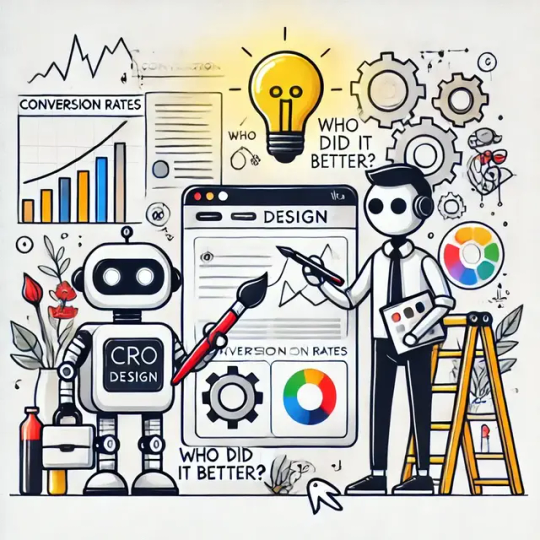
AI in Graphic Design and Its Implications for CRO
Discover the impact of AI in graphic design for CRO, and how businesses are using it to optimize conversions.
Source: https://cro.media/insights/ux-ui/ai-graphic-design-cro-implications/
As AI continues to revolutionize industries across the board, its influence on graphic design has sparked a broad debate. With platforms like Adobe Firefly and Canva integrating AI tools, businesses can generate visuals at scale, speeding up workflows and reducing costs. However, as seen in the growing use of AI for logo generation and image editing, there are both clear benefits and considerable challenges for designers and business owners. For professionals in the CRO (Conversion Rate Optimization) space, understanding AI's role in design is essential, particularly in crafting effective campaigns that convert visitors into customers.
AI's Role in Graphic Design and CRO
AI has become a game changer in design tasks, especially for small businesses and startups with limited resources. Graphic designers can use AI for routine tasks like photo editing or mock-up generation, allowing them to focus on higher-level creative work. For companies focusing on CRO, this could translate to more visually compelling, targeted ads and landing pages created in less time, which could drive higher engagement and conversion rates.
Platforms like Canva already offer AI-powered tools that help non-designers produce high-quality visuals. This democratization of design not only lowers entry barriers but also impacts conversion rates. High-quality, personalized visuals are a key factor in optimizing landing pages and email campaigns for better user interaction. By leveraging AI tools, businesses can quickly generate multiple design variants to test, improving the efficiency of A/B testing—a core principle of CRO.
The Pros of AI in Graphic Design for CRO
Faster Turnaround Times and Increased Efficiency
For CRO specialists, speed is critical. AI-generated designs can rapidly produce multiple variations of graphics, allowing for more frequent testing and optimization. This could lead to quicker insights into which designs resonate best with the target audience, driving more conversions.
Personalization and Customization
AI can enhance design personalization at scale. By analyzing customer behavior and preferences, AI tools can help create highly targeted, relevant visuals for campaigns. Personalized content tends to generate higher engagement, which directly impacts conversion rates. For example, personalized social media ads or email banners can be crafted automatically, ensuring that each user feels like the content speaks directly to them.
Cost-Effective Solution for Small Businesses
In the competitive world of CRO, cost-per-acquisition is always a concern. AI-powered tools provide a cost-effective way to create professional-quality designs without hiring expensive designers. For small businesses looking to optimize their marketing campaigns, this could result in a more efficient allocation of resources, ultimately leading to higher ROI on their campaigns.
The Challenges of Relying on AI in Graphic Design
Lack of Creativity and Originality
One significant downside of using AI for design is the risk of producing generic, uninspired content. In the context of CRO, where differentiation and creativity are key, relying solely on AI-generated designs could result in ads or landing pages that blend in with the competition rather than standing out. A/B testing with similar-looking designs might not yield meaningful insights, as the visuals themselves fail to engage users on a deeper, emotional level.
Quality Control and Human Touch
While AI tools have made strides in design, they still fall short in terms of creativity and attention to nuance. AI lacks the emotional intelligence and context that a human designer brings to the table, particularly in crafting visuals that align with a brand's unique voice or narrative. In CRO, where small tweaks can significantly impact conversion rates, the human touch remains crucial. Automated designs may miss the mark in terms of messaging alignment, color psychology, or storytelling, which are integral to compelling marketing.
Ethical Considerations and Overreliance
As graphic designers and businesses embrace AI tools, ethical questions emerge. Using AI to replicate or automate design processes that were traditionally human-driven could devalue creative professionals. From a CRO perspective, while AI tools are tempting for their speed and affordability, companies should be cautious about overrelying on them at the expense of skilled designers who bring valuable insight into the user experience. The balance lies in using AI as a supportive tool rather than a replacement.
CRO Strategies for Integrating AI in Design
For businesses looking to integrate AI into their CRO strategies, it's essential to maintain a balance. AI can help automate repetitive tasks, produce multiple design variants for testing, and optimize content personalization. However, it is crucial to combine these capabilities with human creativity and strategic thinking.
Utilize AI for A/B Testing: Use AI to generate various design variations for landing pages, ads, and other marketing materials. Test these variants to understand which elements—whether it's color schemes, typography, or imagery—result in the highest conversion rates.
Personalize Campaigns: Leverage AI tools to quickly adapt your designs to specific customer segments, ensuring that each campaign feels tailored to individual preferences. This level of personalization can significantly enhance user engagement and, by extension, conversions.
Maintain Creative Oversight: While AI can assist in speeding up the design process, it is essential for human designers to review and refine the final output. Maintaining high creative standards ensures that the designs remain fresh, engaging, and aligned with the brand’s vision.
The Future of AI in CRO
The integration of AI in graphic design is inevitable, and businesses in the CRO field must adapt to this technological shift. While AI offers many advantages in terms of speed, cost-efficiency, and personalization, it is unlikely to replace the human creativity required to truly engage and convert users. In the coming years, AI will likely become an essential tool in the CRO toolkit, helping teams work more efficiently while still preserving the artistry and insight that only human designers can bring.
For CRO professionals, understanding how AI can enhance design workflows—without sacrificing creativity—will be the key to maintaining a competitive edge in the evolving digital marketing landscape.
0 notes
Text

Explore the future of user interfaces in our latest blog: The AI Revolution: How Smart, Adaptive Designs Are Shaping the Future of UI by Nauman Ahmad, Head of Design & Digital Marketing. Discover how AI is transforming the way we design for tomorrow.
#ai ux design#future of ui#ux innovation#digital transformation#ai in design#user experience#UI trend#design leadership#smart UI#Future design
1 note
·
View note
Video
youtube
Как Recraft.ai помогает зарабатывать на YouTube с помощью AI генерации!
How Recraft.ai helps you make money on YouTube using AI generation!
#youtube#Recraft.ai AI генерация контента Заработок на YouTube Искусственный интеллект Нейросети Генерация изображений AI инструменты для YouTube Авт#Recraft.ai#AI генерация контента#Заработок на YouTube#Искусственный интеллект#Нейросети#Генерация изображений#AI инструменты для YouTube#Автоматизация контента#Монетизация YouTube#AI в дизайне#Технологии#AI content generation#Earning on YouTube#Neural networks#Digital transformation#YouTube monetization#AI in design
0 notes
Text
My Path to a Print-On-Demand Business
Unleashing Creativity for Pillow Image Design
Hey everyone,
Welcome back to my journey into the world of print-on-demand (POD) 🌟. Today, I want to dive into the creative process behind designing pillow images, finding inspiration, and identifying a unique niche in a crowded market. And don’t worry, I’ve sprinkled in some jokes to keep things lively! 😂
Finding Inspiration: A Creative Adventure
When I first started designing pillows, I knew I wanted each design to be unique and meaningful 💡. But finding that spark of inspiration wasn't always easy. Here's how I navigated this creative adventure:
Exploring Online Resources: I began by browsing various online platforms like Pinterest, Instagram, and design blogs 📱. These platforms are treasure troves of ideas, showcasing everything from abstract patterns to detailed illustrations. I created mood boards to collect and organize my favorite ideas. It's like window shopping, but without the awkward moments when you realize you can't afford anything! 🛍️
AI Assistance: Leveraging AI tools has been a game-changer for my design process 🤖. AI can generate countless variations of a design concept, helping me experiment with colors, patterns, and styles that I might not have considered otherwise. However, even with AI, finding the right designs can be incredibly challenging. It requires patience and a lot of trial and error to create something truly unique. Think of it as trying to find a needle in a digital haystack, but at least this haystack won’t give you splinters! 🪡
Real-Life Inspiration: Sometimes, the best inspiration comes from the world around us 🌍. Nature, architecture, and everyday objects can spark amazing design ideas. I often take walks to clear my mind and observe the details in my environment, which often leads to wonderful design concepts 🌿. Plus, it’s a good excuse to get out of the house – and avoid my ever-growing pile of laundry! 🧺
Identifying a Unique Niche
With so many designs and styles out there, finding a unique niche is crucial 🔍. Here’s how I approached this challenge:
Market Research: I spent considerable time researching the market 📊. I visited popular POD platforms like Etsy and Amazon to see what types of pillow designs were trending 🔥. This helped me identify gaps in the market and areas with high demand but low competition. It’s like detective work, but without the trench coat and magnifying glass 🕵️♂️.
Analyzing Competitors: I looked closely at successful shops and brands 🏪. What themes and styles were they using? How did they present their products? By understanding their strategies, I could pinpoint what made them successful and think about how to differentiate my designs. Think of it as studying for an exam, but the exam is “How Not to Blend In” 🎓.
The Challenge of Standing Out
One of the biggest challenges I faced was creating designs that stood out in a sea of similar products 🌊. Here are a few strategies that helped:
Personal Touch: Adding a personal touch to each design made them unique ✨. Whether it’s a pattern inspired by an experience or a design reflecting a particular theme, these elements make my pillows special. It’s like adding secret sauce to a recipe – makes all the difference! 🍔
Quality Over Quantity: Instead of flooding the market with numerous designs, I focused on creating high-quality, well-thought-out products 🏆. Each design goes through multiple iterations to ensure it’s perfect. Quality over quantity, because who wants a bunch of mediocre pillows? Not me! ❌
Storytelling: Every design has a story behind it 📖. Sharing these stories in my product descriptions and marketing materials helps create a connection with customers ❤️. It’s not just a pillow; it’s a piece of art with a meaningful background. Plus, everyone loves a good story – especially one that doesn’t end with, “and then I woke up.” 💤
Early Challenges and Moving Forward
After one week of opening my store, I faced the harsh reality that I had no sales 😢. This initial hurdle was disheartening, but it also motivated me to delve deeper into the world of SEO and marketing. I'm currently working on optimizing my listings to increase visibility and attract potential buyers 📈. It's like trying to get noticed at a crowded party – time to bring out the dance moves (or in this case, the SEO strategies) 🕺. I'll be sharing more about my SEO efforts in the next series, so stay tuned! 📺
Final Thoughts
The journey to find inspiration and carve out a unique niche in the pillow design market has been both challenging and rewarding 🌈. It requires creativity, research, and a willingness to stand out. By leveraging various resources, analyzing successful shops, and adding a personal touch to each design, I've been able to create pillows that resonate with customers 💖.
Thank you for joining me on this creative journey. I look forward to sharing more insights and experiences as I continue to grow my POD business 🚀. Stay tuned for more updates and, as always, happy designing! 🎨
Warm regards, Ivo
https://www.etsy.com/listing/1726025240/punch-me-pillow-fun-home-decor-perfect
#Print-On-Demand Pillow Design#Creative Pillow Designs#Finding Design Inspiration#Unique Niche in POD#AI in Design#Market Research for POD#Analyzing Competitors POD#Pillow Design Tips#Starting a POD Business#SEO Strategies for POD
0 notes
Text


#aesthetic#ai art#digital art#colors#lofi#nostalgia#retrowave#video game#concept art#art#dreamscape#unreality#vibes#dreamcore#liminal#pastel#Vaporwave#dreamy#liminal pool#poolcore#green#plants#interior design#bathroom
6K notes
·
View notes
Text
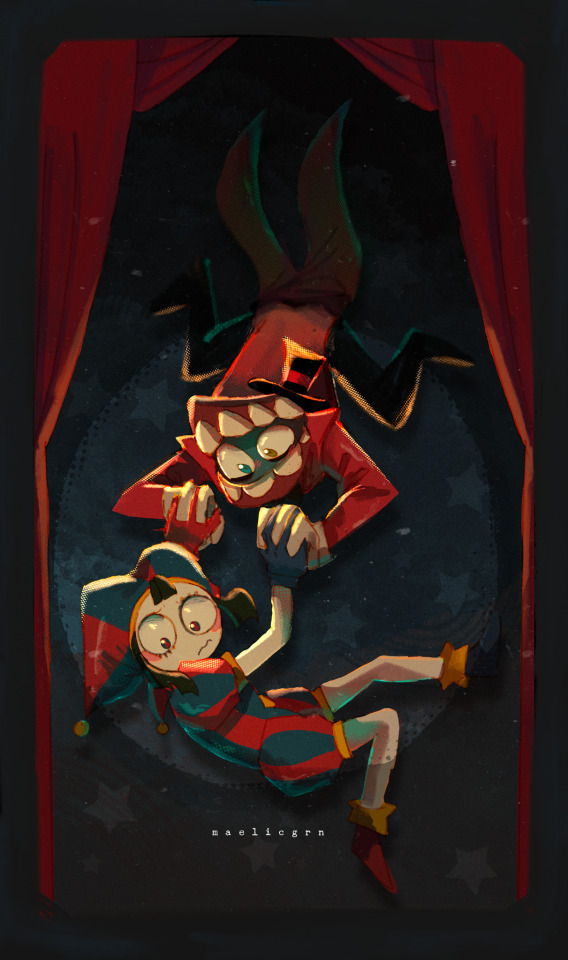
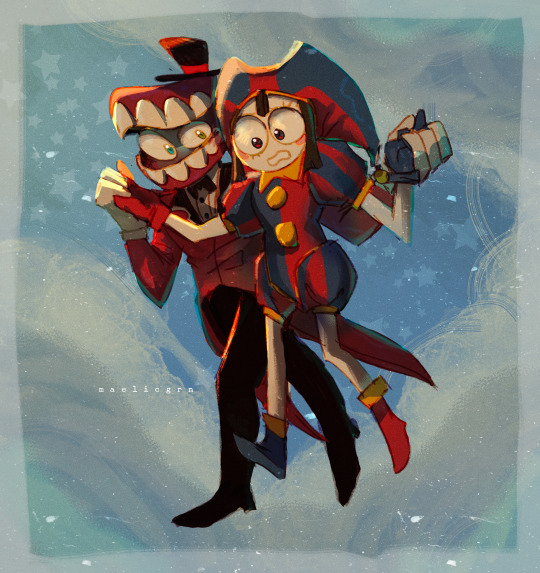
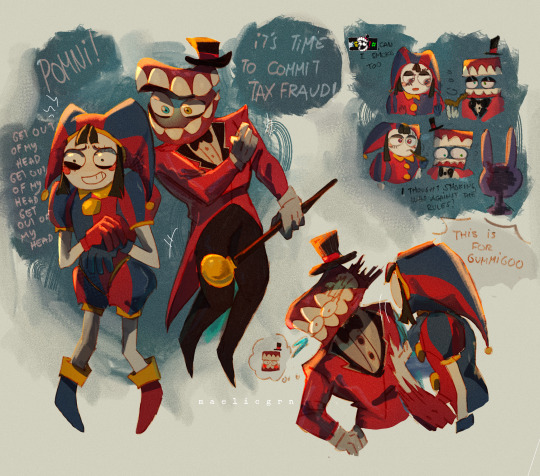
Self-indulgent showtime sketches
#my art#fanart#digital art#the amazing digital circus#tadc#showtime#showtime shipping#pomni x caine#caine x pomni#tadc fanart#look i get that he’s an ai and that she probably hates his guts#but their designs just compliment each other ok??#and they have such a fun dynamic too#i am cringe but i am free#tadc caine#tadc pomni#took me a lot of willpower not to draw them for a while now but the parasites the demons in me….they want me to draw showtime#paine
8K notes
·
View notes
Text
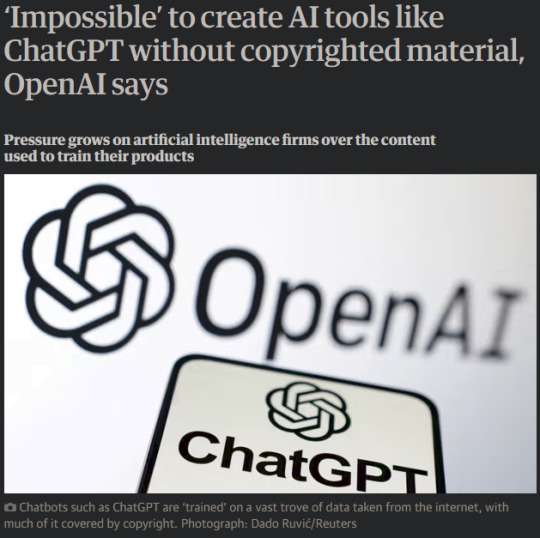
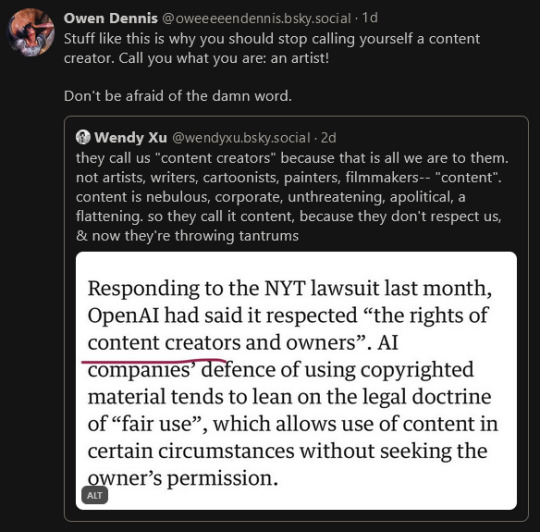
"content creator" is a corporate word.
we are artists.
#anti ai#fuck ai#artists on tumblr#please do not call me or any artist a content creator#i'm an artist. a fanartist. a designer. but not a content creator#ai clowns in my replies will be deleted and blocked without response so do not waste your breath#you are not an 'artist' for generating an image any more than you are a chef for ordering from a restaurant. someone Else did the work.#owen dennis just deleted all his blue sky stuff again and i hate that he does that because he makes such interesting comments#about the entertainment industry lmao i need to just. start screenshotting every smart thing he says#anyway thats why i decided to finally make this when its been sitting in drafts for a few months#owen dennis#edit - if you dont know who owen dennis is he's the creator of one of the best animated series of the last 20 years (Infinity Train)#he's very open about talking about art and the entertainment/animation industry on social media and in his newsletter and hes so cool 4 it
9K notes
·
View notes
Text

"It is a terrible thing, this kindness that human beings do not lose."
The Left Hand of Darkness - Ursula K. Le Guin
#illustration#illustrators on tumblr#art#drawing#artists on tumblr#design#the left hand of darkness#ursula k. le guin#genly ai#therem harth rem ir estraven#tlhod
2K notes
·
View notes
Text
humanising a machinegirl by treating her like a person: based
"humanising" a machinegirl by turning her into a generically pretty waify anime girl: killing you with a hammer until you are dead
#🐉#people in my inbox thinking VAL was an ai got me thinking about this. i would NEVER do that to our beautiful machines.#not that my VAL design is a generic anime girl but she isnt the most original unbiased character design ever either
5K notes
·
View notes
Text
To my mind, the main advantage of Big Stupid Tables over generative content is that generative models must, by the nature of how the technology operates, produce outputs that are statistically likely to appear in their training data, while the outputs of a well-constructed set of dice lookup tables may principally consist of combinations of elements never before attempted on account of being dumb as hell.
#gaming#tabletop roleplaying#tabletop rpgs#game design#big stupid tables#generative ai#llms#swearing
1K notes
·
View notes
Text




Sketching while streaming s5...
Jonathan Sims I will learn to draw you (this is my doing. I could draw him however I want and I choose to stick with an image of him in my brain that is difficult for me to draw. Masochism.)
Not s5 Mahtins below I enjoyed drawing cuz hes neat:

(Edit: I yassified Martin in the do not separate cuz I wanted his hair fluffier)
#yes I realize Jon and Martin are in different fucking art styles let me live#do not accuse me of being AI this difficulty drawing hands is all natural I worked hard drawing for years just to fucking suck at it#update I listened to 170 I heard it was devastating but my ass was LAUGHING#poor martin but omg me and my buddy had everywhere at the end of time in the background and shit was so funny#he forgor 😭💀#it was emotionally devastating at the end tho Jon suggesting he stay there um btich NO?!#Jon the literal Lonely is not worse tham being around you get a fucking grip#helen continues to be the best character her showing up for the juicy gossip is so fucking real#anyagays#tma#tma podcast#the magnus pod#tma fanart#jonathan sims#the magnus archives#martin blackwood#jonmartin#jmart#tma jmart#tma season 5#tma spoilers#i have to make a diagram for my jon and martin designs for s5 SO bad#if only i could draw jon.... >:(#i need u guys to know that my martin loves plaid and jon is wearing a plaid shirt thats too big in s5... inchresting....#sarag art
4K notes
·
View notes